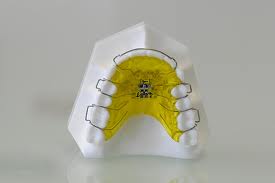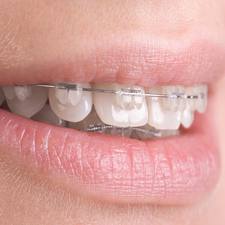Orthodontic treatment can be divided into:
i) Removable orthodontic appliances
ii) Fixed appliances (braces)
iii) Orthognatic surgery
We will be focusing on removable orthodontic appliances in this article.
Firstly, you may want to know what are the types of movement involved in orthodontics and the amount of force required for that movement of a single tooth:
i) Intrusion (10-20 gm) -Movement of a tooth inwards (into its tooth socket, or apically)
ii) Extrusion (35-60gm) -Opposite of intrusion, i.e. movement of a tooth out of its socket, or coronally
iii) Tipping (35-60gm) -tilting movement of a tooth, eg moving an incisor that was protruding inwards
iv) Rotation (35-60gm)
v) Root uprighting (50-100gm) -Eg, rotation of an incisor sideways
vi) Bodily movement (70-120gm) -Requires the largest amount of force. It is the movement of the entire tooth in one direction without rotating or tilting.
Indications for removable orthodontic appliances
1. Minor tooth movements such as crown tipping
2. Relative intrusion or extrusion
3. Preventive and interceptive orthodontics (e.g to maintain an open spacing, or habits to break habits such as thumbsucking) in growing children
4. As an adjunct to fixed appliances for expansion or extra oral traction.
5. To act as retainer for retention purposes following fixed appliance therapy.
Reasons not to opt for removable orthodontic appliances:
1. Complex malocclusions like severe crowding
2. Cases requiring:
-multiple rotations
-apical (towards the direction of the tooth root, or apex of the tooth) displacement of teeth
-controlled space closure
-bodily movement of teeth
3. Open bite or severe deep bite (deep bite is upper teeth overlapping lower teeth by more the normal range of 2-4mm)
4. Malocclusion on the lower jaw

A removable appliance with a labial bow, 4 Adam's clasps, an expansion screw in the middle, and an acrylic base combining all the components
Parts of a removable appliance:
1. Active components
i) Springs- made of stainless steel wire, used for tipping or minor rotations especially of upper front teeth, and also for pushing the upper front teeth together if there was a gap between the teeth previously.
ii) Bows– made of stainless steel wire extending across the upper front teeth, can be used as passive retainers (after retraction of a previously protruding front teeth, the retainers are used to prevent the front teeth from going back, or relapsing into their original position), or as an active component to retract the upper front teeth.
iii) Screws- are incorportated into the acrylic base for the purpose of expansion of a jaw in growing children.This is particularly useful when there is crowding, the expansion of the jaw (either upper or lower) will result in increased space to accomodate the teeth and reduce crowding.
iv) Elastics- used for reciprocal teeth movements in both upper and lower jaw (eg to pull the upper molars frontwards and at the same time pull the lower molars backwards in patients with class III malocclusion, or protruding lower jaw; or to correct single tooth cross bite)
2. Retentive component (clasps)
-To hold the appliance in the mouth and prevent it from falling out.
-Types of clasps: Adam’s clasp (most commonly used), Jackson clasp, southend clasp, ball-end clasp etc
3. Baseplate
-The acrylic portion (the main body), which serves the following purposes:
i) Supports other components such as the active components and clasps
ii) Contributes to anchorage (resistance to unwanted tooth movement, eg movement of a front teeth is anchored against the molar teeth) through contact with the palatal vault.
iii) Can be built into bite planes (thickened acrylic which will be contacted by opposing teeth) to reduce deep bite.
 Advantages of removable orthodontic appliance compared to fixed appliance
1. Can be removed for tooth brushing
2. Palatal coverage contributes to increased anchorage
3. Easy to adjust (the wires can be easily bent, and the acrylic base can be easily trimmed or added to at the chairside)
4. Less risk of damage to teeth (eg root resorption occurs due to excessive force exerted on the tooth and is more common in fixed appliance)
5. The acrylic base can be thickened to form flat bite planes either on upper front teeth or the back teeth
6. Useful both as passive retainers and an active appliance.
7. Can be used to transmit forces to blocks of teeth.
Disadvantages of removable appliance:
1. Appliance can be easily misplaced, especially in the first few days or weeks after the appliance is issued, asit has to be constantly removed and reinserted into the mouth.
2. Only limited tooth movements are possible (eg tilting movements). Movements requiring larger amounts of force will require fixed orthodontic appliance (eg bodily movement)
3. Not efficient for multiple individual tooth movement
4. Good technicians required
5. Affects speech
6. Lower removable appliances are difficult to tolerate, hance are not commonly fabricated.

